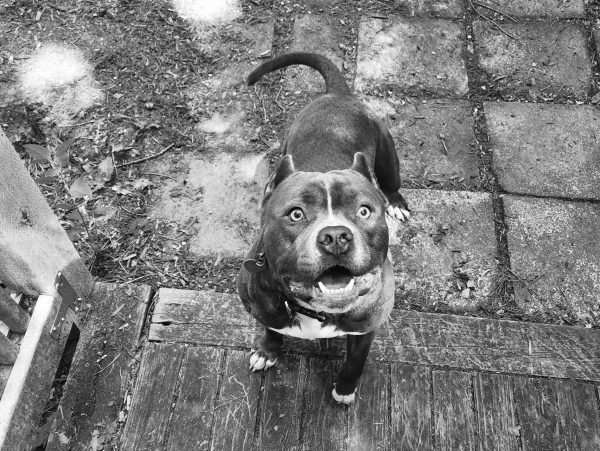Having Humbleness in All We Do
Healthy cultural soil, counter-rhythms, and the power of Silver Branch Perception

I’ve written about humility many times since the pamphlet “Humility: A Humble, Anarchistic Inquiry” first came out in the fall of 2020. As I’ve been preparing to go speak about humility again later this week out west in Portland, I’m reminded how much this seemingly simple and eminently human way to be in the world is badly needed right now. When humility levels drop, despair, conflict, and crises are almost certain to follow. Check the news and you’ll find more than enough evidence of humility’s unfortunate absence. Without humility, it’s impossible to build caring workplaces, communities, and countries in which we can create well-being for all involved. Conversely, an increase in humility would lead us all to more love, more care, more kindness and, I’m pretty sure, peace and dignity.
As I studied the subject over the years, I began to see humility as the metaphorical equivalent of topsoil. In nature, without humus, nothing much is likely to grow. As scientist Suzanne Simard says, “The humus is the foundation of the forest. … It’s an absolutely fundamental part of the being of the forest.” What follows then is a call to all of us—starting with myself—to rebound in the quiet regenerative powers that humility offers to anyone who wants to welcome it into their life. Humility doesn’t get much attention, but it is grounding and good for the planet as well as the people we work with. I wrote in the pamphlet:
The linguistic origin of the word “humble” comes from the Latin humilis, meaning “grounded” or “from the earth.” It’s connected to the word “humus,” which refers to the organic component of soil. In Hebrew, the name of the first man in the Old Testament, Adam, comes from adama, or “earth.” Which leads me to wonder if living humbly is a prerequisite for bringing our full humanness to the fore? Perhaps humbleness happens when we’re at our most human? And when we’re at our most human, we’re effectively in a grounded state of humbleness?
Unfortunately, neither humility nor humus seem to be on the rise right now. Smithsonian reported earlier this spring that “More than 50 billion tons of topsoil have eroded in the Midwest; the estimate of annual loss is nearly double the rate of erosion the USDA considers sustainable.” A few years ago, the Union of Concerned Scientists announced, “If soil continues to erode at current rates, U.S. farmers could lose a half-inch of topsoil by 2035—more than eight times the amount of topsoil lost during the Dust Bowl.” If I follow the metaphor through, a lack of humbleness leads us away from our humanity, and into trouble. The “topsoil” that’s needed for us to grow as we were designed by nature erodes. The result is the emotional equivalent of climate change; moods become more and more extreme, and swing more and more quickly. Arbitrary applications of authority appear with greater regularity. Temperatures rise as arguments ensue ever more frequently. It makes me think of the state of the nation’s politics as the metaphorical equivalent of the Dust Bowl. What should naturally hold together begins to blow around so badly it’s hard to see clearly—I look at the news today and think back on what it was like to walk through a dust storm in central Kansas during the Great Depression. When the topsoil is gone—both real and metaphorical—we’re in trouble. A few years after the Dust Bowl ended, Dr. Ted Albrecht, an agronomist and professor of soils at the University of Missouri, wrote:
Without humus the earth becomes a corpse, as the Gobi Desert or the Sahara is, and the enormous increase of desert condition … a phenomenon even more terrifying than the savagery of the present war, which is the logical outcome of living for wealth rather than for health.
At times, I will admit, I worry that I’m overfocusing on humility. In light of all the problems we face, humility can seem so small and insignificant. Humble, perceptive leaders like Kathleen Lonsdale inspire me to keep going with it. Lonsdale, who was born in 1903 in County Kildare, just south of Dublin, spoke from experience. An outspoken pacifist in an era when war was the norm, and a woman in a scientific world wholly dominated by men, she repeatedly spoke out—and modeled for the world—what she believed was right. Lonsdale was willing to stand up (and go to jail) for what she believed, and she humbly but powerfully spoke her mind. In her 1957 book, Is Peace Possible?, Lonsdale proposes, “Those people who see clearly the necessity of changed thinking must themselves undertake the discipline of thinking in new ways and must persuade others to do so.” Which leads me to, humbly, keep suggesting that an increase in humility would help us all. We are all, whether we like it or not, imperfect, interconnected, and interdependent. Lonsdale writes:
The pure scientist … must be willing to share his knowledge with others, and since truth is not the monopoly of any one person or nation, he must have an international outlook. He owes a debt to the past, because his own knowledge is based on free publication of the results of other people, and therefore he should dislike secrecy. He ought to be humble, because he knows he does not have the whole of truth, partly because truth is not the monopoly of the scientist and partly because the scientific method includes a realization of the mistakes and misinterpretations of past scientists, the elimination of successive error in his own results and those of other people.
What Lonsdale is describing is not likely to win anyone a political office, but it does, quietly and effectively, make a big difference. While the world fixates on quick fame and fast fortunes, it’s actually by focusing on building the humble topsoil that we can create the kind of healthy lives and organizations to which we aspire. Humility allows us to admit that none of us have all the answers, and embrace the wisdom of Edgar Schein, the country’s leading expert on company culture, who wisely writes: “I’m the consultant, and I don’t know what to do!”
Humility is easy to miss, but it matters. A lot. As I wrote in the pamphlet,
Humility, by definition, won’t win big headlines. It waits quietly in the wings.
If we listen closely, humility has a lot to teach us.
Mozart once said, “The music is not in the notes, but in the silence between.” Humility fits that frame. It’s the space between the sounds. The whisper between the words. The energy between the egos. Humility is both ethereal and essential. Like great music, it’s hard to measure—and often goes past unnoticed by casual listeners. But if we pay close attention, we can begin to benefit from the beauty and grace that humility brings to the world.
Thinking musically like this leads me to share a recent learning I’ve had that has given me a new and helpful lens through which to look at the power of humility. It’s about what the art and music world calls “counter-rhythms.” The dictionary says that a counter-rhythm is “a rhythm that complements another rhythm.” It stands in contrast to what gets more attention; each makes the other more immediately apparent. In this context, I’ve started to see our ego as the rhythm; we need to draw on it to lead, and to push, as Kathleen Lonsdale and so many others have, for what we believe. Ego helps us to stand up for what’s right, to speak our minds, to put our art out into the world. On its own, though, the ego creates all kinds of problems. Humility is the counter-rhythm. It balances out the ego, brings us back to ourselves. Finding that balance is easier said than done; I struggle with it regularly, as does everyone I know who has started to see the quiet importance of humility. When we use the two well in tandem, our work has a powerful authenticity. You can feel the difference. Counter-rhythms quietly make the music and art we admire possible. While the eye or the ear goes naturally toward the rhythm, the counter-rhythm is the contrast that makes it great. The artist—or leader—who masters counter-rhythm can, quietly, create magical work.
Painter Robert Hunt (who designed the DreamWorks logo) shares that counter-rhythms “became a mantra to me.” The shift in the quality of his work was significant. “My drawing immediately improved,” he says. Same goes for leadership, I’ve come to see. Strong-willed, innovative leaders without humility go off the rails. Rather, it’s when the rhythm of our main message is effectively balanced with the counter-rhythm of humility that our work is most evocative and effective.
Speaking of which, one quiet source towards which I’ve started to look for a deeper understanding of humility is the late Irish philosopher John Moriarty. Born in 1928 in County Kerry, Moriarty, himself, was something of a counter-rhythm. His philosophy is intriguing but it’s his humility, I believe, that makes it so special. Writer Michael W. Higgins says, “For most of his life Moriarty remained a neglected treasure.” After Moriarty’s passing in 2017, Higgins called him an “epic visionary in the tradition of the Franco-American monk-poet Thomas Merton.” Moriarty, Higgins says, “… sought the consolations of contemplation, the sanctuary of isolation.” He was clearly quite humble, a mindful and thoughtful model for the rest of us to learn from. Réamonn Ó Ciaráin writes:
Moriarty seems to have thumbed a lift to his speaking engagements. He was a contemplative uninterested in prestige or wealth. He was more fascinated by the caterpillar metamorphosing from leaf-eater to butterfly feeding on nectar, than in academic prestige. For almost threescore and ten years John Moriarty emitted gentle waves of challenge almost like dropping a rose petal down the Grand Canyon, he was so fond of and waiting for the echoes.
Moriarty wrote a lot about the ancient Irish concept of “Silver Branch Perception”—a practice of “opening our minds, eyes, and ears” to pay attention, and to tune into the quiet that those who are racing through life will very likely miss. Moriarty said that Silver Branch Perception gives us “a marvelous way of seeing and knowing things that, in effect, is paradise regained.” Slowing down to get centered around humility can help us to see the small things, and notice the nuances that actually make a big difference.
Knowing that humility is a good idea is infinitely easier than making it an integral part of our organizational culture. How do we make humility happen? On an organizational level, writing humility into our vision can work wonders. Encouraging meaningful equity helps as well—we work to create a workplace where everyone matters and no one is better or worse than anyone else. Regular reflection almost always increases humility. This could be journaling, intentional mindfulness, therapy … Talking about our struggles with friends who are themselves grounded in humility helps us gain valuable perspective. Openly admitting our own shortfalls, asking for help regularly, and paying attention to the small successes of people who are typically ignored on the organizational periphery can all contribute to our humble cause. Edgar Schein, in his wonderful book Humble Consulting, recommends that we stay “committed to being helpful, bring a great deal of honest curiosity, and have the right caring attitude.”
Here at Zingerman’s, humility is, ever imperfectly, embedded in the way we work with consensus decision-making at the partner level. It’s an implicit part of Open Book Management and also open meetings. Using Bottom Line Change is a very effective way to make humility come alive in the day-to-day—I might be the CEO, but I still need to use the process to make a change. Diversity drives us to understand we’re all flawed but finding our way by working together. Humility is also now clearly and directly written into our Statement of Beliefs:
We believe humility is an essential ingredient for effective leadership and contributes to personal growth and success.
Another way to increase humility is simply to recognize quiet caring acts of effective, humble leadership when and where they happen. In the spirit of which, I noticed the article that K.C. Johnson—who has been writing about basketball for nearly thirty years now—posted about the coach of the Chicago Bulls Summer League team, John Bryant. While coaching professional basketball is a line of work that usually recognizes drama and yelling, Johnson’s experienced and insightful eye effectively identifies the gentle counter-rhythms of Bryant’s coaching. His quiet humility makes his messages far more powerful. “Leadership is hard to fake but easy to spot,” Johnson writes. Bryant, he says, “displayed it calmly and consistently. From his pre-practice habit of having players share thoughts and opinions about each other to his vulnerability in talking about losing his father to COVID-19, Bryant represented the franchise with class.”
In a society that admires awards, idolizes its heroes, and tears down those it doesn’t like, it’s hard to stay centered in a caring, dignity-based, humble middle ground. And yet, when we make humility a high priority, we will be better able to work together instead of going to war. We can focus on acceptance instead of anger. We can learn to do right instead of worrying about being right. Humility is what allows us to work caringly and collaboratively together, to find the answers, ideas, and insights that we would otherwise miss. Building humility up, instead of wearing it out, can quietly but effectively transform our organizations. And our lives.
As I was working on this piece, I realized I ought to practice what I’m preaching. When I went to the Roadhouse chefs’ meeting the other day, I decided to ask for help understanding what impact humility has had in our kitchen. I proposed that we use the question “What does humility mean to you all?” as the meeting’s icebreaker (a humble and equitable way to get everyone’s voice into a room at the start of any session). They had more to say than I can squeeze in here, but their comments were inspiring. Head chef Bob Bennett said, “There are a lot of kitchens where ego dominates and there’s lots of yelling. Humility means we don’t do that.” Sous chef Jessica Forbes said, “It’s about staying ‘right–sized’ with your ego. You try not to take too much credit, but you try not to beat yourself up either. It looks like walking down the middle of the road, always trying to keep your side of the street clean.” Supervisor Chris Kucera said, “Humility is listening to everyone, no matter their position. It’s trying to take in everyone’s advice.” At the end, Bob added, “Humility reminds us to make time to help someone in need.”
Bob’s comment reminded me of a small personal story that I’ve been watching unfold out behind our house. It’s about the kind of meaningful difference humility can make. As some of you know from her Instagram, Tammie has been rescuing dogs over the last few years. On New Year’s Eve, she saved a pit bull named Blu from an abusive setting where he was chained up outside in the mud 24 hours a day (not good in the Michigan winter). Blu is very strong, and hence, to many, also scary. Most everyone who worked with him at the shelter where Tammie took him liked Blu, but still politely wrote him off as reactive, hostile, and risky. In the spirit of Silver Branch Perception, Tammie, as she often does, saw something others didn’t. Humbly following her heart, knowing that she didn’t have the perfect answer but might still be able to make a difference, she did what Kathleen Lonsdale called for: she took action. She has stayed grounded within herself, but also treated Blu with dignity from day one. Tammie got Blu into a tiny house on our property where she’s helping him get used to being around people, eat better food, get exercise, love, and get ready to find someone who can pay him proper attention and offer him a forever home. Slowly but surely over the last month, Blu’s anxiety has been going down, his eyes have softened, and his energy is slowly shifting. A few nights ago, something wholly unexpected happened. Blu gently put his head on Tammie’s leg and held it there. It was, as she says, the canine equivalent of a hug. The next night, out on our porch, he laid on his back and let her rub his tummy—the most vulnerable position a dog can put himself in. It was a remarkable thing to see, something that would never have happened without the quiet power of humility. There’s still a long way to go, but thanks to Tammie’s care, Blu is slowly becoming the dog he was born to be.
This sort of shift is what, I realize, we can do for people we bring into our organizations who have suffered in bad workplaces or challenged lives where they, like Blu, have understandably hardened their hearts and learned to keep their defenses high at all times.
Why does all this even matter? Like topsoil in nature, we need humility to grow as healthy human beings. Without humility, it’s hard to collaborate. Both dignity and democracy depend on it. It’s only with humility that we can make our organizations and our communities more caring, more peaceful, and more positive places to be. The cost is very low, but the upside for those who are humble and patient is big. Robert Hunt wrote this about counter-rhythms, but it could just as easily be applied to humility:
It’s all around us—the first step is to know it’s there, the second is to look for it, the third is to incorporate it. You may be surprised to find out that it could have a transformational effect on your work. Maybe it will help you make something no one else has seen before…but they will know it has something special in it.
Want to learn more about how to lead from a grounded, humble place of self-awareness? Maggie Bayless and I will be co-teaching the ZingTrain Master Class next month—it’s almost full but there are still a few seats left! It’s on Zoom so you can sign up from New Zealand, Nova Scotia or anywhere else from which you want to learn more about effective self-management.
The “Humility” pamphlet is available at the Deli, Roadhouse, Coffee Company, and online at ZingTrain.com and Zingermanspress.com. We’ve also put together this Leading with Humility Pamphlet Bundle filled with philosophies and practical tools that together can help you create a humbler culture. If you’d like to help increase the topsoil in your organizational culture, we would be glad to arrange bulk pricing if you buy a bunch. Email Jenny at [email protected].
Want more from Ari?
Sign up for Ari’s Top 5 e-newsletter and look forward to his weekly curated email—a roundup of 5 Zing things Ari is excited about this week—stuff you might not have heard of!




Zingerman’s Art for Sale